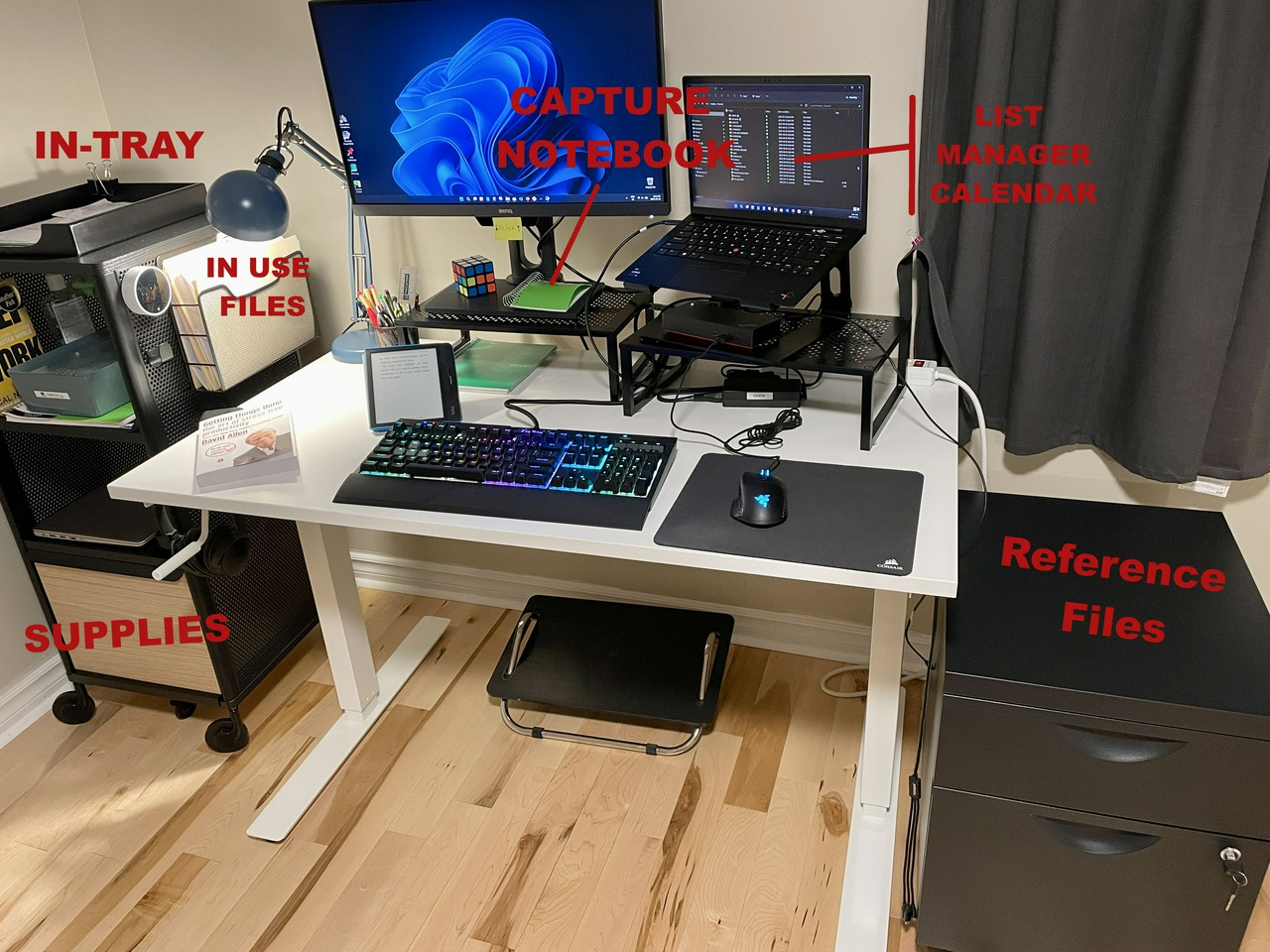GTD Notes: Chapter 15 – GTD Mastery and Conclusion
This is a series of posts with reading notes of the book “Getting Things Done: The Art of Stress-Free Productivity” by David Allen.
Chapter 15 – The Path of GTD Mastery
The GTD methodology is a lifelong practice. David noticed that people can have different levels of maturity:
Employing the fundamentals of managing workflow.
Implementing a more elevated and integrated total life management system.
Leveraging skills to create clear space and get things done for an ever expansive expression and manifestation.
We start with the basics, making small adjustments, dealing with our day-to-day reality, and then we progress to look at higher horizons (long term goals and objectives, vision and life purpose).
Mastering the Basics
- Learning to capture EVERYTHING, big or small, into a trusted system
- Using a “Waiting For” category for deliverables
- Using “Agendas” lists to capture and manage communication with others
- Keeping a simple and easy to use reference system
- Keeping the Calendar as “hard landscape”
- Doing Weekly Reviews
Graduate Level – Integrated Life Management
- A complete, current, and clear inventory of projects
- A working map of one’s roles, accountabilities, and interest both personally and professionally
- An integrated total life management system. Custom tailored to one’s current needs and direction, and utilized to dynamically steer out beyond the day-to-day
- Challenges and surprises trigger your utilization of this methodology instead of throwing you out of it
At some point, David says, “projects will become the heartbeat of your operational system”. They will be a reflection of our roles, areas of focus and interests. You might start customizing your system to better fit your needs.
Post Graduate – Focus Direction and Creativity
- Utilizing your freed up focus to explore the more elevated aspects of your commitments and values
- Leveraging your external mind to produce novel value
Once the details of our daily lives are taken care of, there will be more space and focus for more creative thinking. A good example is unearthing items from our Someday/Maybe lists when we feel we are ready.
Conclusion
As David Allen mentions at the end of the book, the GTD methodology validates much of what is common sense. The merit of this book is that it is extremely practical while at the same time explaining the principles behind the methodology. Plus, the GTD methodology is super flexible and can be tailored to fit our own needs and preferences.
After 10 years applying this methodology, I can confidently say that it has had a powerful impact on my life. It has helped me manage day-to-day mental clutter and execute significant, life-changing projects. All of my major life changes were once captured in a Someday/Maybe list.
For me, GTD goes beyond task and project management. It's more about figuring out what makes my work meaningful, living mindfully, and keeping my head in a good space. It's not just about being super productive—it's about making life feel worthwhile.
Post 61/100 of 100DaysToOffload challenge! #100DaysToOffload #100Days #productivity #GTD #GTDnotes
Thoughts? Discuss... if you have a Write.as account or Reply by email
By Noisy Deadlines Minimalist in progress, nerdy, introvert, skeptic. I don't leave without my e-reader.

